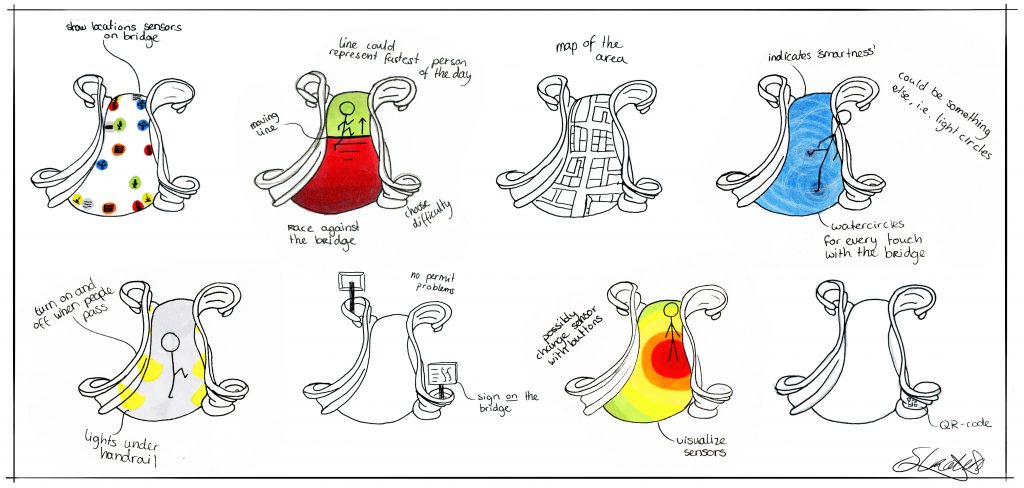“As soon as you see the bridge, you know this one is different.” Naomi van Stralen is studying Industrial Design Engineering at the University of Twente. Ms. Van Stralen is researching not just how the bridge can clearly show that it’s different, but also how it actually differs.
The bridge she is referring to is the 3D-printed bridge by MX3D. It was first presented two years ago at the Dutch Design Week in Eindhoven where we spoke with and interviewed Kars Alfrink. The interview is available here.
“The organic shape of the bridge shows that 3D printing makes it possible to create very different shapes than we are used to seeing. Your curiosity about how the bridge was made is triggered by its shape. But the fact that the bridge is full of sensors is not immediately visible, let alone what that means. You expect a bridge, which takes you from one side to the other when you use it, but you get a sensor that measures how you walk, where you walk and maybe even who you are. It was up to me to create a design that makes it clear and comprehensible that the bridge is also a sensor.”
“The Tada Manifesto helps me achieve this. If you just use the GDPR as a framework, you are only thinking about personal data and privacy. Tada gives you a broader framework and helps you consider all the data, including the non-personal and other principles that are at stake, and not just privacy. I’m not an ethics expert, so it helps me that Tada has already thought about this.”
People need to keep moving, but also pause to reflect
“With Tada in mind, I explore the different interests that users have; tourists, local residents, law enforcement and so on. The best way to find out how to do that is by asking people. Luckily, the bridge has now been placed here in Twente, so I can stop by often. I have now created a design here that I can test. Interviews are a necessary part of the process. I want to present people with different scenarios and ask them to place themselves in other people’s shoes. Maybe they do not consider it as a problem at all that the bridge is measuring them.”
Then you have to think about how to tell your story so that people get a lot of information in a short time. We want people to take a moment to reflect about what a smart bridge does. But we don’t want them to literally stand still, because that causes traffic congestion. We want to be transparent about everything, but there is a limited to how much information someone can take in. How much can you communicate? How much should you be telling people? Does everything still need a sign as the city gets smarter and smarter?
Since a sign is poorly visible when it is too crowded, the current idea is to respond to the people on the bridge with interactive lighting: brighter, dimmer, changing color, etc. And QR codes with a link to a website for more information. The lights indicate that something is going on, but the sign and the website tell you what is actually happening.

Tada was a great help, but what I was still missing was the foundation: what is it all based on? If I really want to be able to defend the principle of Open & Transparent design in my thesis, then I want to be able to substantiate where that principle comes from. Explaining this clearly on the website seems like a nice challenge for Tada.”
Naomi van Stralen’s thesis will be finished in about a month. As soon as it is published, we will post a link to it on our Twitter and below this blog post.
Leave a Reply
You must be logged in to post a comment.